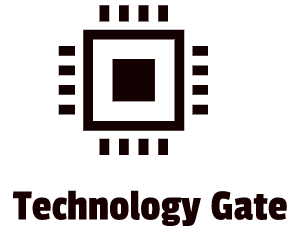Fintech is the application of new technological advancements to products and services in the financial industry. Fintech can be immediately linked to banks, blockchain, stock trading, insurances, and hedge funds but it can also be applied to technological advancements of corporate information systems about their financial processes.
I have been specialized in accounting and controlling during my whole working career but all the possible applications/integrations of Fintech into corporate information systems are completely unknown to me. Mainly because I haven’t invested a lot of time in the possibilities and because Fintech never had a prominent position in the organizations where I worked. I think many organizations will be confronted with a transformation of their information systems, in which input is self-evident and where the focus will be on the output: the results.
A few weeks ago a small book about Fintech that one of my colleagues had with her, piqued my interest and it provided me with a very clear framework and a model that could link the key financial processes in a business with Fintech solutions. It is a perfect guide in my journey into Fintec and to move forward into more detail after that. The first step was the actual foundation. The model that was created by the writers of the book (Martijn Zoet, Koen Smit, Eric Mantelaers and Adri Köhler) looked like a pyramid:
The pyramid shows that Fintech has three disciplines in which it can support management: decision mining, data mining and business intelligence. The pyramid lacked a specific reference to RPA so I integrated it in the middle of it as a binder and catalyst of the whole process. I did this because I think that in order to get the best bang for the buck, an effective RPA system can dramatically increase the quality of the output of the three key Fintech pillars. I see RPA as a great supporting tool/application to get the maximum benefit out of the three disciplines if executed/utilized properly.
Transacting/RPA
When you look at standardized transactions at a financial department, a lot of proceedings that are done can or were replaced by a form of RPA. RPA stands for Robotic Process Automation and is a software technology that makes it easy to build, deploy and manage software robots that can copy human actions by interacting with digital systems and software.
To implement RPA your process should meet the below requirements:
- The proceedings need to be repetitive. A program is far less capable to make adjustments during the process than humans;
- Clear and transparent information needs to be available for all process steps. Processes have to be defined step by step so that a program can follow these processes step-wise;
- A lot of applications make RPA deployability far more meaningful than a handful of applications. The power is in the numbers and with only 1-2 applications there is a chance that the business case for RPA is not sustainable because of an unacceptable Return On Investment (ROI). RPA is not for free and significant performance improvements should be visible by using RPA. If this is not the case or if there are doubts, don’t implement RPA;
- A clear process structure for both input and output. As previously stated, a program can’t make adjustments as easily as a human. A fixed process structure helps to prevent a program from getting stuck on a process because of an unclear/not standardized process structure. If a program gets stuck, the problem needs to be solved manually and that’s exactly the opposite of the goal you want to receive with RPA;
- A stable process. There should not be too many process changes during the year(s). If there are, it will come at the expense of standardization and that reduces the effectiveness of RPA.
Business Analytics/BI
Let’s start with the term business object. To explain what a business object is, I’ll use a car as an example. You can command a car by using some specific tools like a steering wheel, breaks, gears, etc. If you want to change direction with the car, you turn the steering wheel. But the steering wheel itself is not changing the direction. The inner workings are doing that (cables, mechanics, fluids, etc.). These inner workings are not immediately visible to you and you can’t operate them by yourself to get the result you want. However, by using specific tools like a steering wheel, the inner workings abide your instructions. These inner workings can be seen as business objects. A business object expects an XML input (like a car expects input from the driver) and generates XML output (in case of the car a change of direction once you steered). A business object does all the work in your information system but you can’t see a thing: it just “happens” after receiving input. Business objects are the building blocks.
Business objects generate raw data. But raw data has no value until you unlock the insights within this data. The data needs to help you to make the right decision for your company. Otherwise, it makes no sense to gather the data.
Business intelligence software (BI software) can be of help in this. It can visualize the raw data in useful information to see how the business operates. A successful deployment of BI software needs to meet one key condition: correct master data. If you have incomplete and even corrupt master data, it doesn’t make any sense to start deploying BI. In my opinion, everything begins with a robust information management system, standardized processes, well-trained employees that make very limited mistakes in the system and up-to-date applications. If you don’t meet these conditions as an organization, it makes no sense to start with BI in my opinion. In one of my previous posts, you can read my full plea for a State of the Art information management system.
Data Analytics/Data mining
Data mining is a component of data science. Data mining searches through a vast amount of datasets, mining for “nuggets of wisdom”. Data mining exposes patterns in huge datasets that can provide valuable intelligence for a business. There are several data mining methods:
- Classification: dividing large datasets into specific categories. This is most effective for marketing. It allows companies to publish different ads in different domains while ensuring that the right ads target customers who would respond most favorably to the ads.
- Clustering: this takes classification to a completely different league. It detects small anomalies or similarities that human beings can’t see. Clustering can uncover ways to make direct marketing (so straight to the target) more powerful than classification on its own.
- Association: this is the most powerful of the three. Association uncovers relationships between variables over time. By tracking and analyzing customer activity (and behavior) a business can begin to predict the future behavior of a (possible) customer.
What I want to state clearly is that we are talking about human beings here. The software can analyze a pattern but we as human beings are not machines ourselves. Our general purchase behavior is also influenced by other factors like culture, emotions, upbringing, etc. I think a lot of marketing departments forget these very important decision factors and miss the opportunity to truly understand a person. The blind trust in data that is provided leads to missed opportunities and missing trends. I think a combination of both (data and social understanding) is far more powerful than data only.
The difference between business intelligence (BI) and data mining is that BI converts data into useful information for executives by tracking key performance indicators (KPIs) in such a way that it encourages data-driven decisions. Data mining has the computational intelligence and algorithms to detect certain patterns that can be interpreted and presented to management via BI.
That’s the reason why data mining is most optimal for applying concentrated sets of data on a specific department, competitor(s) or customer segment(s). Analyzing these smaller datasets can reveal hidden answers to specific business-related questions.
Data mining and BI work best as a tandem: they complement each other. You can see data mining as a forerunner of BI. When you collect data, it is often raw and unstructured. This makes it almost impossible to conclude anything based on just raw data. Data mining decodes these complex datasets and delivers a clearer version for a BI team to derive insights. A company should use data mining to gain an understanding of the “what” which then empowers the BI team to answer the “how” and “why”.
A business that invests in both data mining and BI tools can test, perform and interpret analyses quickly and in a reliable way if you combine both tools.
Decision support/Decision mining
Decision mining is also referred to as decision point analysis. It is a combination of process mining and machine learning to retrieve information about how an attribute in a business process affects a case’s route choice. It identifies decision points by looking into a workflow model and analyzing rules for each choice in that model, based on available attributes using a decision tree. Doing this is very complex and it requires AI and a lot of algorithms to do this most efficiently.
A good example is a full analysis of the full supply chain workflow: purchase, planning, logistics, warehousing, etc. Analyzing this full chain and all the decision processes within to check if decisions/flows can be set up more efficiently requires a lot of effort and I think this is almost impossible for a human being. By analyzing full chains, AI/algorithms can help a business make the right decisions in reshuffling a full chain in the organization to make it more effective.
Final thoughts
My knowledge about Fintech and its application within an organization is still very limited. In my next posts, I will deep-dive into the key applications of Fintech in an organization: RPA, BI, Data mining, and Decision mining.
Feel free to ask me any questions or give me additional tips/advice in relation to Fintec and the integration of it in organizations in special by contacting me. If you want to keep in the loop when I upload a new post, don’t forget to subscribe to receive a notification by e-mail.





